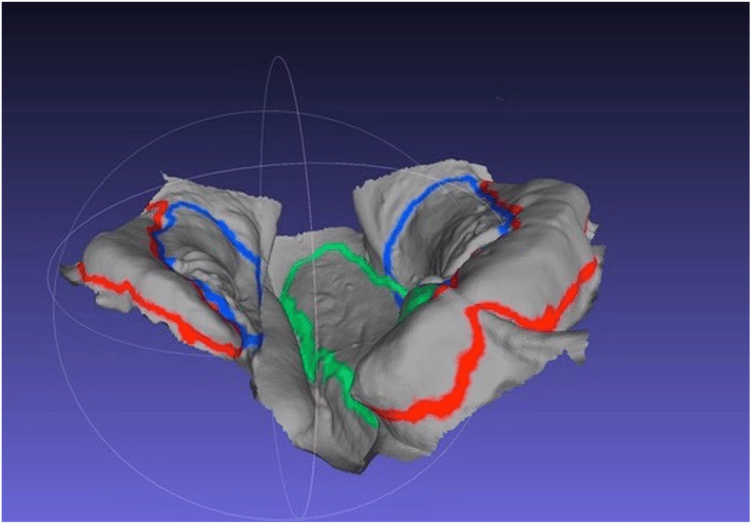Research from Aberystwyth University could help children born with a cleft lip and palate to avoid multiple operations as they grow up.
Around one in every 700 babies worldwide is born with a cleft lip or palate and reconstructive surgery is usually required during the early months.
As they grow and develop, some children may require additional surgery to improve facial appearance and function or the alignment of the jaw.
In a bid to reduce the need for multiple operations, computer scientists at Aberystwyth University are working with clinical experts to better forecast growth patterns in a baby’s mouth.
They are using 3D models and machine learning techniques to accurately predict what the outcomes of surgery will look like in five or ten years’ time.
Speaking during Cleft Lip and Palate Awareness Week 2025, lead investigator Professor Reyer Zwiggelaar from the Department of Computer Science at Aberystwyth University said: “We want our research to lead to better outcome for patients born with a cleft lip or palate.
“Although corrective surgery for the majority of cleft lip or palate patients is successful, some require further intervention as they grow older. Using state-of-the-art deep learning technologies, we aim to provide surgeons with the tools they need to make precision-informed decisions before operating.
“We hope our work will help avoid the need for some children to go through additional operations.”
Cory Thomas, a research software engineer in the Department of Computer Science at Aberystwyth, said: “We are developing algorithms which will be able to identify six significant points in a baby’s mouth and these annotations can then be used to predict future growth.
“The software will help avoid what is referred to in clinical terms as “bad growth” which requires further surgical intervention, for example, to address a flattening of the face.”
The research at Aberystwyth is being informed by the expertise and experience of a clinical surgeon and an orthodontist who have been working with young cleft lip and palate patients for many years.
Bruce Richard, a retired plastic surgeon who specialised in cleft and palate surgeon at Birmingham Children’s Hospital for over 30 years, said: “About 25 per cent of children born with a complete cleft lip and palate end up with poor mid-face growth by the age of 16 and can choose to have a major bony operation to pull the mid face and the upper jaw teeth forward to correct the ‘caved in’ mid-face look.
“If we could predict which children are at the highest risk of experiencing this poor growth, then we could develop new strategies with dental appliances to try and reduce the issue before the child reaches five to eight years of age.
“Success would mean fewer teenagers having to go through a major operation in young adulthood.”
The next stage of the research will focus on building 3D prediction models, and a series of clinical trials will be required before the technology can be used in a medical setting.
The research has received funding from the VTCT Foundation

.jpeg?width=209&height=140&crop=209:145,smart&quality=75)

.jpeg?width=209&height=140&crop=209:145,smart&quality=75)

Comments
This article has no comments yet. Be the first to leave a comment.